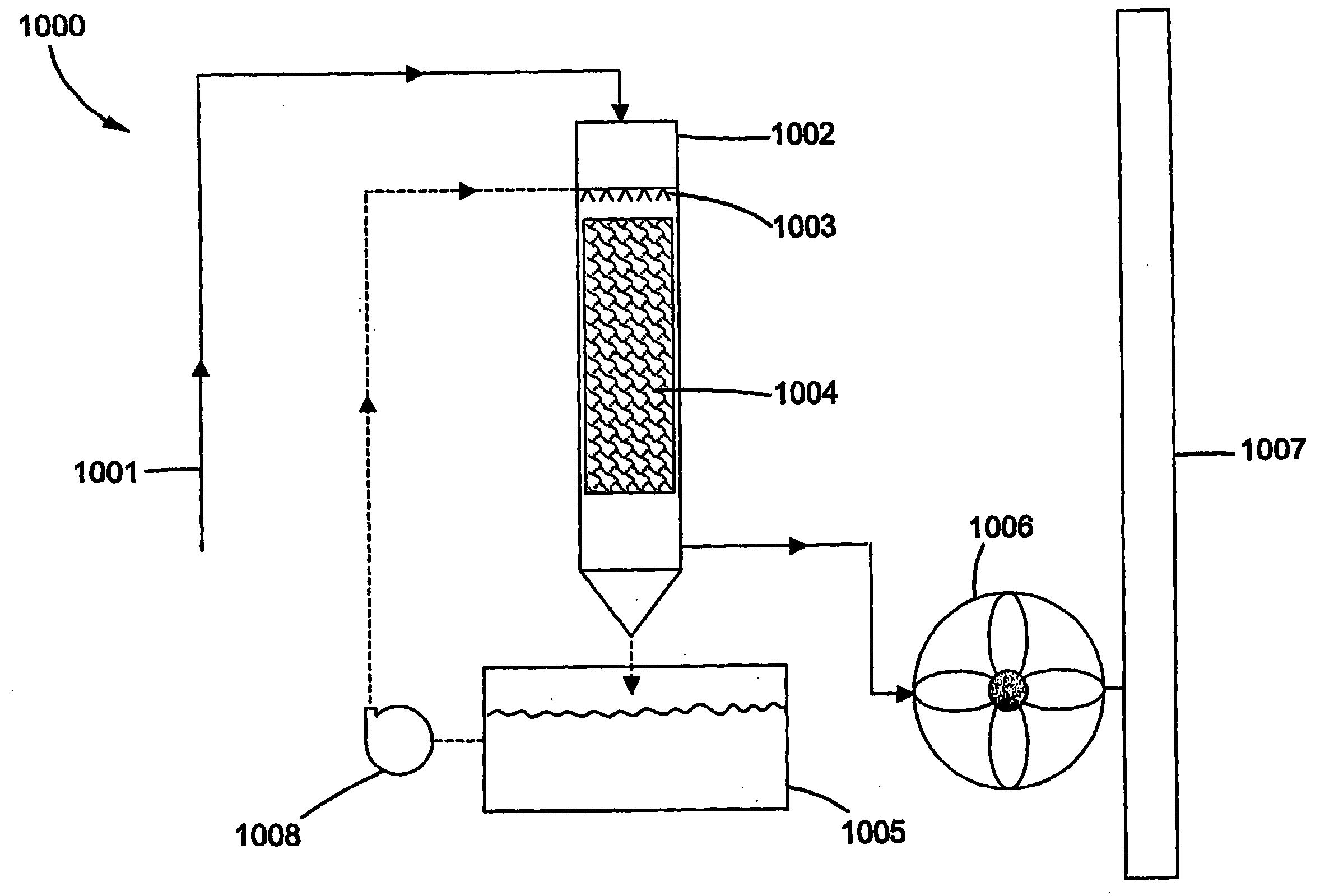Gas cleaning process and equipment therefor
a technology of gas cleaning and equipment, applied in auxillary pretreatment, mixing machines, using liquid separation agents, etc., can solve the problems of inability to achieve removal efficiencies of above 90% of particle sizes relative large bulk of the known wet scrubbing system, and inability to achieve the removal efficiency of over 90% of particle sizes of less than 0.05 micron, etc., to enhance the removal of vapour and enhance the effect of chemisorbtion
- Summary
- Abstract
- Description
- Claims
- Application Information
AI Technical Summary
Benefits of technology
Problems solved by technology
Method used
Image
Examples
Embodiment Construction
[0058] A preferred embodiment of the invention win now be described by means of a non-limiting example only and with reference to the various aspects of the invention and the accompanying drawings.
[0059] A single high intensity mixing and contacting device or so-called MSPR, was modified in accordance with the invention. The modified MSPR was used in pilot plants designed for the removal of relatively fine particulates from a gas stream, using a scrubbing fluid, and the subsequent separation of the gas and the scrubbing fluid, the gas stream being part of the hot off-gases from the Sinter and other furnace related processes at one of the Iscor Limited iron making facilities at Vanderbilt Park, South Africa.
[0060] The hot off-gases from the Sinter and other furnace related processes, so-called sinter gas, was generated during the sintering of a mixture of fine ores, additives, iron-bearing recycled materials from downstream operations such as coarse dust and sludge from blast-furna...
PUM
| Property | Measurement | Unit |
|---|---|---|
| Temperature | aaaaa | aaaaa |
| Temperature | aaaaa | aaaaa |
| Temperature | aaaaa | aaaaa |
Abstract
Description
Claims
Application Information
 Login to View More
Login to View More - R&D
- Intellectual Property
- Life Sciences
- Materials
- Tech Scout
- Unparalleled Data Quality
- Higher Quality Content
- 60% Fewer Hallucinations
Browse by: Latest US Patents, China's latest patents, Technical Efficacy Thesaurus, Application Domain, Technology Topic, Popular Technical Reports.
© 2025 PatSnap. All rights reserved.Legal|Privacy policy|Modern Slavery Act Transparency Statement|Sitemap|About US| Contact US: help@patsnap.com



